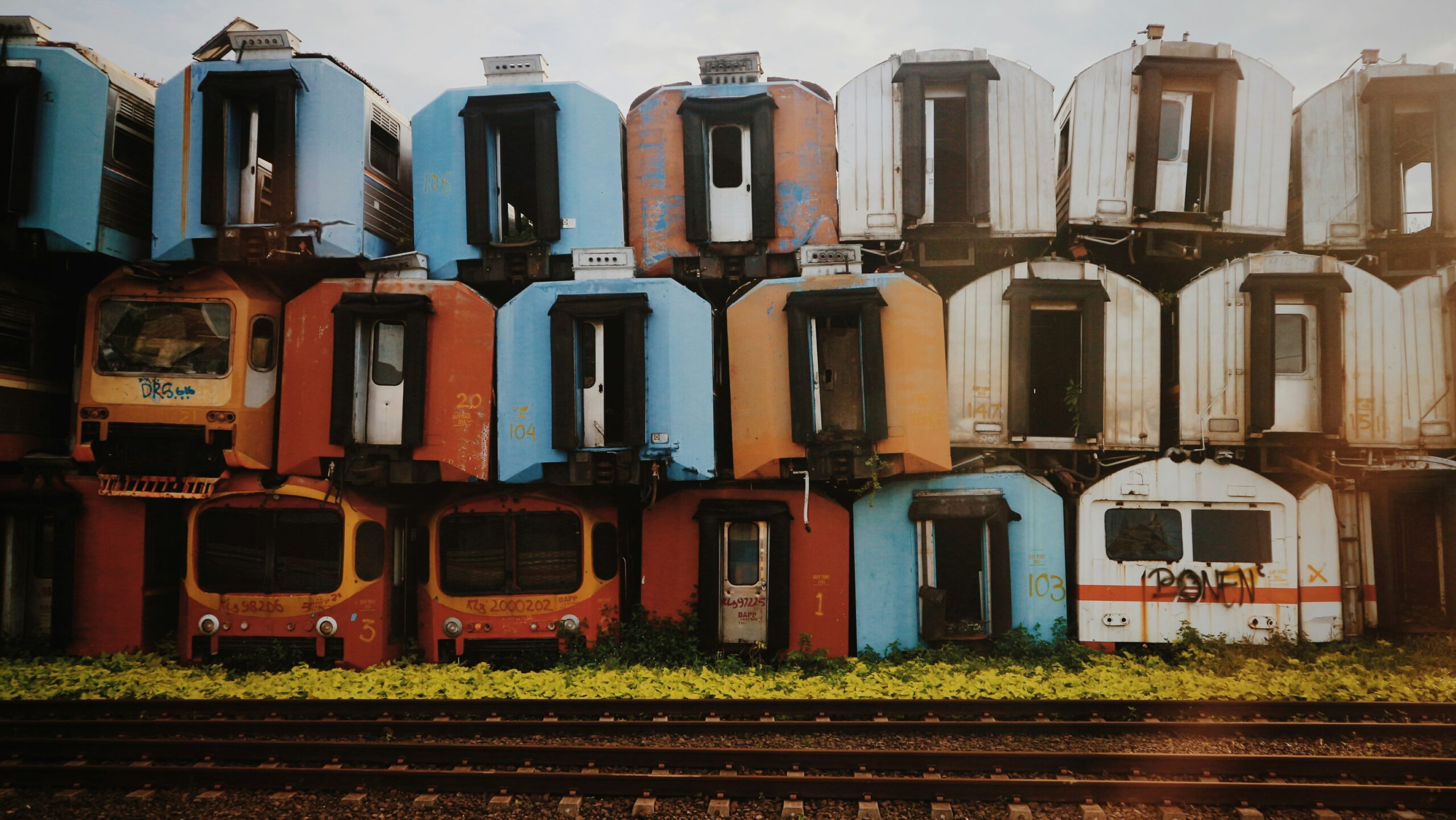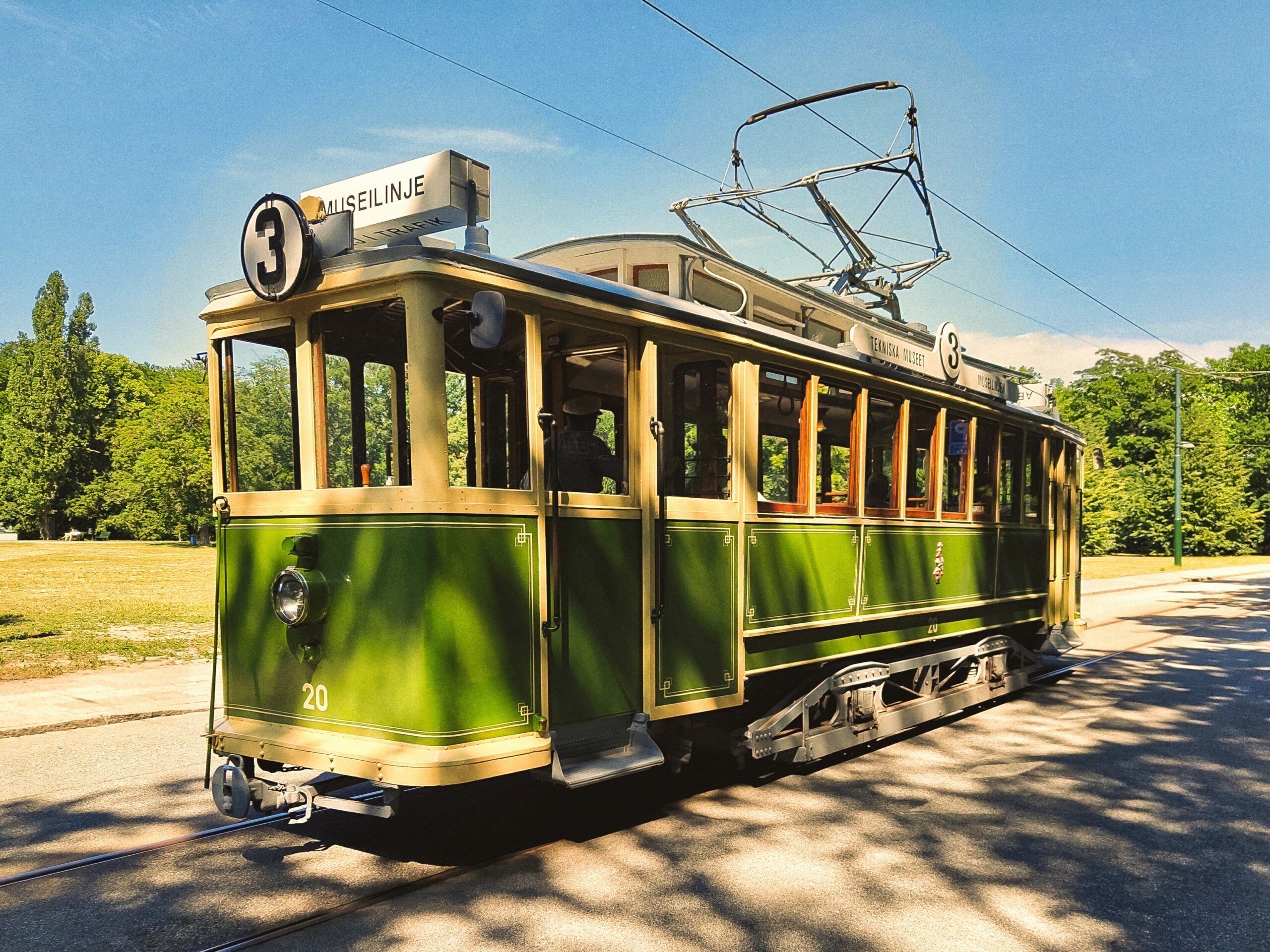
Imagine stepping back in time to the streets of Haarlem in the late 19th century. The clatter of horse-drawn carriages fills the air, but a new era is about to dawn. In 1887, the first horse-drawn trams begin to navigate the city's narrow streets, revolutionizing public transportation. But the real game-changer arrives in 1899 with the electrification of the tram lines. Suddenly, the once-leisurely pace of travel accelerates as the first electric tram zips through Haarlem, powered by the latest technology of the time.
As the new century unfolds, Haarlem's tram network expands rapidly, connecting the city to nearby towns like Bloemendaal, Zandvoort, and Heemstede. The trams become the arteries of the region, transporting people, goods, and ideas with unprecedented efficiency. Haarlem's citizens embrace this new mode of transportation, marveling at the speed and convenience it brings to their daily lives. The trams not only reshape the city's physical landscape but also its social fabric, making travel more accessible to people from all walks of life.
The roaring twenties usher in a golden age for Haarlem's trams. These sleek, streamlined vehicles become symbols of modernity, embodying the spirit of progress and innovation. With their efficient electric motors and comfortable interiors, the trams offer a glimpse into the future of transportation. Haarlem's residents take pride in their cutting-edge tram system, which becomes the envy of other Dutch cities.
But the trams' moment of glory is short-lived. As World War II engulfs Europe, Haarlem's trams face new challenges. Bombings and sabotage take their toll on the network, causing damage and disruptions. Yet, even in the darkest of times, the trams persevere. They play a crucial role in the war effort, transporting troops and supplies, and serving as a lifeline for the city's beleaguered population. After the war, the trams undergo a period of restoration, emerging as a symbol of Haarlem's resilience and determination.
Consider this timeline of key events in Haarlem's tram history during this period:
| Year | Event |
|---|---|
| 1920 | Introduction of modern, streamlined tram designs |
| 1940 | Outbreak of World War II, trams face wartime challenges |
| 1945 | End of World War II, restoration of damaged tram infrastructure |
| 1948 | Trams celebrate Haarlem's 700th anniversary with special decorations |
The trams of this era leave an indelible mark on Haarlem's history, shaping the city's identity and becoming an integral part of its cultural heritage. As you explore Haarlem's streets today, keep an eye out for remnants of this golden age, from vintage tram stop signs to repurposed tram depots that now serve as unique event spaces or museums. The legacy of Haarlem's trams lives on, inviting us to imagine a time when these iconic vehicles ruled the roads.
Picture this: it's the 1950s, and the once-mighty trams of Haarlem are facing a new rival - the humble bus. As buses become more affordable and flexible, the trams begin to lose their luster. The city's leaders decide it's time for a change, and gradually, tram lines start to disappear from Haarlem's streets. It's a bittersweet moment for the city's residents, who have grown up with the familiar clang and rumble of the trams.
But all is not lost! As the trams fade into history, a new movement emerges to preserve their legacy. Passionate locals band together to create tram museums, where visitors can marvel at beautifully restored vintage trams and learn about their role in shaping Haarlem's history. And if you're lucky, you might even get to ride on one of these classic trams during special events or scenic tours. It's a testament to the enduring love that Haarlem's residents have for their trams, even as they become a thing of the past.

Have you ever wondered what goes on behind the scenes to keep a tram system running smoothly? In Haarlem, it was a complex dance of maintenance facilities, power stations, and dedicated workers. The tram depots were the heart of the operation, where trams were serviced, repaired, and stored. These bustling hubs of activity were a world unto themselves, with their own unique culture and camaraderie.
But the trams didn't just impact the city's infrastructure - they also shaped its very neighborhoods. Imagine living in a time when the tram was your lifeline to the rest of the city. Suddenly, areas that were once considered remote or inaccessible were opened up, thanks to the tram lines that snaked through them. This newfound accessibility sparked a boom in residential growth, as people flocked to these newly connected neighborhoods. The trams didn't just transport people - they transformed the very fabric of Haarlem's urban landscape.
Consider this table of tram-related infrastructure in Haarlem:
| Infrastructure | Role |
|---|---|
| Tram depots | Maintenance, repairs, and storage of trams |
| Power stations | Providing electricity to power the tram network |
| Tram tracks | The physical infrastructure that trams run on |
| Tram stops | Designated points for passengers to board and disembark |
Picture yourself standing on a bustling platform, waiting to board a tram bound for Amsterdam. The excitement is palpable as you realize that this very tram will carry you from the heart of Haarlem to the vibrant Dutch capital. It's a journey that countless passengers have taken over the years, marveling at the scenic views and the convenience of this direct connection between two of the Netherlands' most beloved cities.
But the trams didn't just connect Haarlem to the outside world - they also served as a vital link within the city itself. Imagine hopping on a tram in Haarlem's city center, ready to explore some of the city's most iconic landmarks and attractions. From the majestic St. Bavo Church to the charming Grote Markt square, the trams made it easy for locals and visitors alike to discover the best of Haarlem. These tram routes were more than just a means of transportation - they were a gateway to the city's rich history and cultural heritage.
Some of the most notable tram destinations in Haarlem included:
As you explore Haarlem today, keep an eye out for the traces of its tram history that still linger in the city's streets and landmarks. From repurposed tram depots to vintage tram stops, these remnants of the past offer a fascinating glimpse into the role that trams played in shaping the city we know and love today.
Imagine a crisp autumn day in Haarlem, with the leaves turning golden and the air filled with a sense of nostalgia. Suddenly, the sound of a vintage tram bell rings out, and you're transported back to a bygone era. This is just one of the many tram-related traditions and events that keep Haarlem's tram heritage alive. From festive tram parades to lovingly restored vintage vehicles, these celebrations are a testament to the enduring impact of trams on the city's identity.
But it's not just about the events themselves - it's about the way they make people feel. For many Haarlemers, the trams are more than just a mode of transportation. They're a symbol of local pride, a reminder of the city's rich history and resilience. When you see a vintage tram rolling down the street, you can't help but feel a sense of connection to the generations who came before you, who rode those same trams and shaped the city we know today. It's a feeling that's hard to put into words, but one that every Haarlem resident knows deep in their heart.
Just when you thought the story of Haarlem's trams had reached its end, a new chapter begins. In the 1980s, the city embarked on an ambitious project to bring trams back to the streets, this time with a modern twist. Enter the R-NET tram line, a sleek and efficient system that connects Haarlem to neighboring cities like IJmuiden and Hoofddorp. With its state-of-the-art technology and comfortable interiors, the R-NET is a far cry from the trams of old, but it carries on their legacy of innovation and progress.
But the R-NET is just the beginning. Haarlem has big plans for the future of its tram network, with expansion projects in the works to bring trams to even more corners of the city. And here's the really exciting part: these new trams aren't meant to replace other forms of transportation - they're designed to work in harmony with them. Imagine being able to seamlessly transfer from a tram to a train, or hop on your bicycle and ride alongside the tram tracks. It's a vision of a city where every mode of transportation works together to create a seamless, sustainable, and accessible network.
Check out this table of Haarlem's modern tram projects:
| Project | Description |
|---|---|
| R-NET | A modern tram line connecting Haarlem to neighboring cities |
| Haarlem Nieuw-Zuid | A planned expansion of the tram network to the south of the city |
| Station Zone | A project to integrate trams with the city's main train station |
| Oostpoort | A proposed tram line serving the eastern part of Haarlem |
Bonus: Experience Haarlem's Tram History Today
Want to experience the magic of Haarlem's tram history for yourself? You're in luck! The city offers plenty of opportunities to step back in time and immerse yourself in the world of vintage trams. Imagine climbing aboard a beautifully restored tram car, the wood paneling gleaming and the brass fittings polished to a shine. As you settle into your seat, the tram sets off on a scenic route through the city, offering a unique perspective on Haarlem's historic streets and landmarks.
But the fun doesn't stop there. Haarlem is dotted with tram-related landmarks that offer a fascinating glimpse into the city's transportation heritage. From former tram depots that have been repurposed into trendy cafes or event spaces, to sections of preserved tram track that have been incorporated into public parks or gardens, these remnants of the past are hiding in plain sight. All you have to do is keep your eyes peeled and your imagination open.
Some of the best ways to experience Haarlem's tram history include:
So what are you waiting for? Hop aboard and discover the fascinating world of Haarlem's trams - a journey through history that will leave you with unforgettable memories and a newfound appreciation for the city's rich cultural heritage.
We hope you enjoyed this glimpse into the vibrant life of Haarlem. For more stories, tips, and local insights, keep exploring HaarlemToday. Don’t forget to share your favorite articles with friends and join the conversation on our social media channels. Until next time, keep discovering the unique flavors and experiences that make our city special